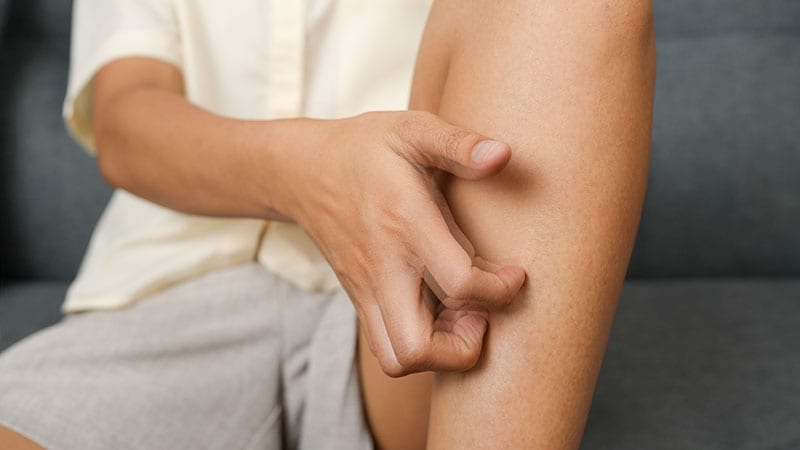TOPLINE:
In a study, patients with neuropathic pruritus showed significantly higher rates of anxiety, depression, sleep disorders, type 2 diabetes, obesity, and falls than healthy individuals. Gabapentin and topical corticosteroids were the most prescribed treatment agents with high success rates.
METHODOLOGY:
- Researchers conducted a retrospective cohort study of 71 adults with neuropathic pruritus at the University of Maryland outpatient dermatology clinic between January 2017 and January 2023.
- Overall, 32.4% of patients had notalgia paresthetica, 52.1% had scalp dysesthesia, and 9.9% had generalized neuropathic pruritus.
- They also assessed 71 healthy individuals without neuropathic pruritus from the same clinic with clinically normal skin and no pruritus or inflammatory dermatoses.
- Comorbidity rates, treatments, and their responses were evaluated for both the patient groups.
TAKEAWAY:
- Patients with neuropathic pruritus demonstrated increased odds of anxiety (adjusted odds ratio [aOR], 2.6; P = .04), depression (aOR, 2.2; P = .05), sleep disorders (aOR, 3.4; P < .01), type 2 diabetes (aOR, 2.5; P = .08), obesity (aOR, 2.9; P = .02), and falls (aOR, 4.4; P = .01).
- Topical corticosteroids were the most prescribed treatment (67.6%), followed by gabapentin (63.4%) and physical therapy or neck exercises (35.7%). Pregabalin (16.9% of patients), tricyclic antidepressants (19.7%), capsaicin (19.7%), and first-generation (28.2%) and second-generation (25.4%) antihistamines were also frequently prescribed treatments.
- Gabapentin was the most effective neurally acting therapy, with improvement in 26 of 45 (57.8%) treated patients, while pregabalin demonstrated benefit in 4 of 12 (33.3%) treated patients.
- Nearly half of the 48 patients prescribed topical corticosteroids showed improvement; antihistamines were the least effective, showing improvement in only 2 of 38 treated patients (6.1%).
IN PRACTICE:
The study “highlights the clinical complexity” of neuropathic pruritus “and the need for a multidisciplinary, individualized approach to care,” the authors of the study wrote, noting that the higher rates of anxiety, sleep disorders, obesity, T2D, and falls represent “important comorbidities to screen for and possible contributors” to the pathophysiology of neuropathic pruritus. “The diversity of treatments used reflects the heterogenous and complex nature” of the condition, they added, “underscoring the need for a deeper understanding of its pathophysiology and personalized treatment strategies.”
SOURCE:
The study was led by Viviane Liao, BA, and Yagiz Matthew Akiska, BSE, Department of Dermatology and the Maryland Itch Center, University of Maryland School of Medicine, Baltimore, and was published online on August 8 in the Journal of the American Academy of Dermatology.
LIMITATIONS:
Limitations included the retrospective, single-center design and the absence of quantitative itch assessments.
DISCLOSURES:
The study did not receive any funding. One author disclosed serving as an advisory board member and consultant for AbbVie, Amgen, Arcutis Biotherapeutics, ASLAN Pharmaceuticals, and various other pharmaceutical or biotech companies. Other authors reported having no conflicts of interest.
This article was created using several editorial tools, including AI, as part of the process. Human editors reviewed this content before publication.
